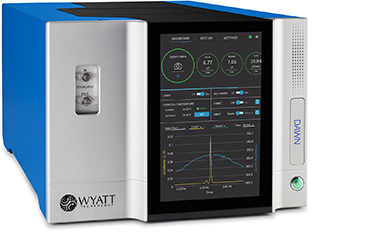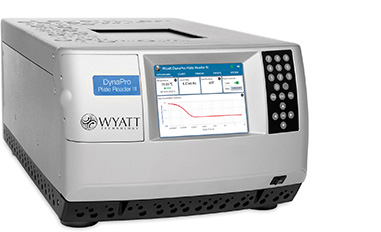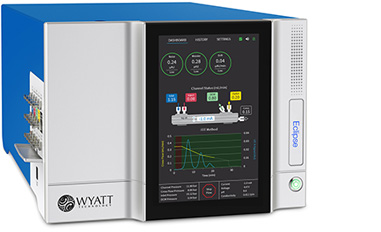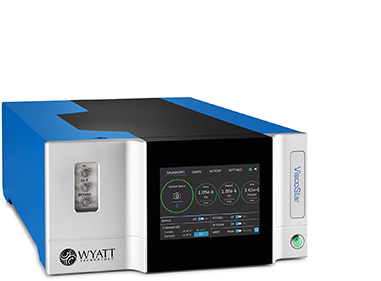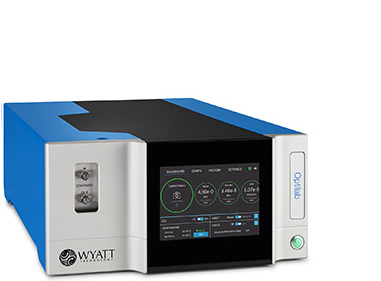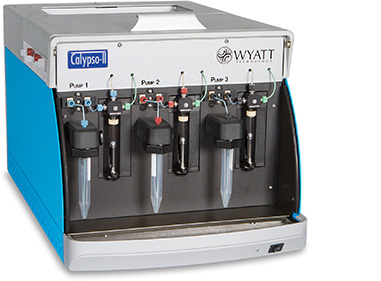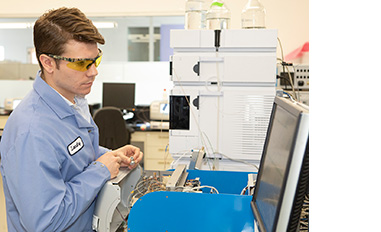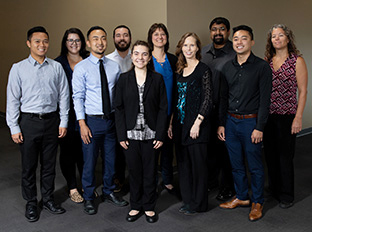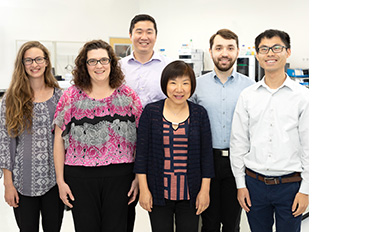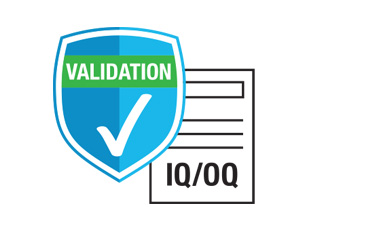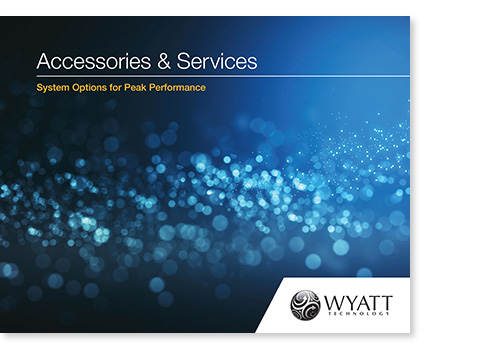Wyatt Products
MALS
Couple a DAWN™, miniDAWN™ or microDAWN™ multi-angle light scattering (MALS) detector to SEC or FFF for reliable characterization of distributions of molar mass / molecular weight, size, conjugation and conformation of macromolecules, aggregates, fragments, conjugates, colloids, and nanoparticles.
Or use ultraDAWN™ to monitor and control nanoparticle, pharmaceutical and polymer production processes by measuring molar mass and size in real time.
DLS & ELS
Dynamic light scattering (DLS) measures the hydrodynamic radius of proteins, aggregates, nanoparticles, vesicles, and more. The NanoStar™ uses standard microcuvette format and the DynaPro™ Plate Reader high-throughput microwell plates.
The DynaPro™ ZetaStar™ instrument measures dynamic, static, and electrophoretic light scattering (DLS/SLS/ELS) all in one device, either manually with microcuvettes, or automatically via an autosampler and flow cell under a wide range of solvents, including physiologically relevant salt solutions.
FFF
Eclipse™ carries out field-flow fractionation (FFF) of macromolecules and nanoparticles ranging in size from 1 nm - 1000 nm, with no stationary phase, eliminating shear and non-ideal column packing interactions.
A wide choice of channels separates both soluble and colloidal components, from nanogram to milligram quantities.
Viscometers
The ViscoStar™ and microViscoStar™ on-line differential viscometers measure the intrinsic viscosity of polymers downstream of SEC. Differential viscometry is best combined with MALS and RI for analysis of polymer conformation and Mark-Houwink parameters.
On its own, the ViscoStar may be utilized with the Universal Calibration technique or Mark-Houwink parameters to assess polymer molar mass / molecular weight over a wide range.
Refractometers
Optilab™ and microOptilab™ refractive index (dRI) detectors are utilized primarily for on-line measurement of analyte concentration in SEC-MALS and FFF-MALS, and for determination of analyte dn/dc (refractive index increment), and the absolute refractive index (aRI) of solvents.
Optilab dRI detectors serve as universal concentration detectors since no chromaphore or fluorophore is necessary. Required for Conjugation Analysis.
CG-MALS
The Calypso™ automated composition-gradient accessory and software are used in conjunction with a MALS detector (CG-MALS) to characterize biomolecular interactions, label-free and immobilization-free. CG-MALS determines equilibrium dissociation constants self- and hetero-association as well as more complex interactions.
Also useful for automation of Zimm plots, dn/dc analysis, reaction kinetics and polymer interaction analyses.
ASTRA
Our comprehensive software solution for MALS and DLS analysis in chromatography, FFF or batch mode.
ASTRA™ is available in both standard and 21 CFR Part 11 compliant versions, and offers additional modules for advanced capabilities, such as universal calibration (online viscometry), particle analysis or research database.
HPLC CONNECT
ASTRA’s HPLC CONNECT provides full digital synchronization between your HPLC system, Wyatt detectors and ASTRA and minimizes user error, runs SEC-MALS from a single, familiar environment and saves you time and money.
This module works with standard Agilent HPLC hardware including pumps, autosamplers, column ovens, UV/Vis detectors, and fraction collectors.
DYNAMICS
Software for batch DLS, SLS and ELS measurements in the DynaPro™ and instruments that is available in both standard and 21 CFR Part 11 compliant versions.
DYNAMICS™ calculates size, size distributions, and derived parameters such as the melting temperature TM, the aggregation onset temperature Tonset and the concentration coefficient of diffusion kD.
VISION
Turn-key solution to design, optimize, execute and analyze field-flow fractionation experiments for characterization of macromolecules and nanoparticles.
VISION™ software integrates seamlessly with ASTRA for FFF-MALS data collection and analysis, and is available in both standard and 21 CFR Part 11 compliant versions.
OBSERVER
OBSERVER™ acquires real-time multi-angle light scattering data from ultraDAWN™, then calculates and reports weight-average molar mass and z-average rms radius, thirty times each minute.
Where most PAT instruments monitor process conditions such as temperature, pressure and stock feed, OBSERVER’s RT-MALS analysis provides actual product quality attributes.

